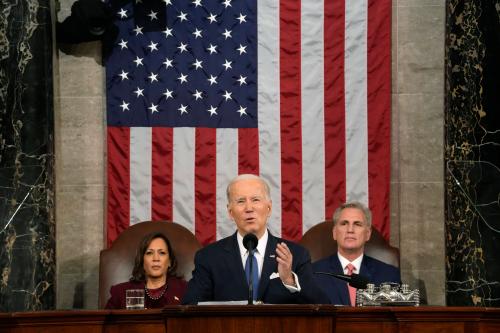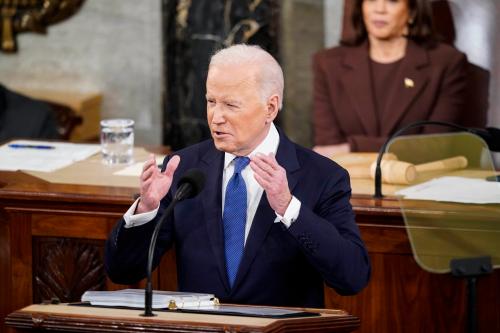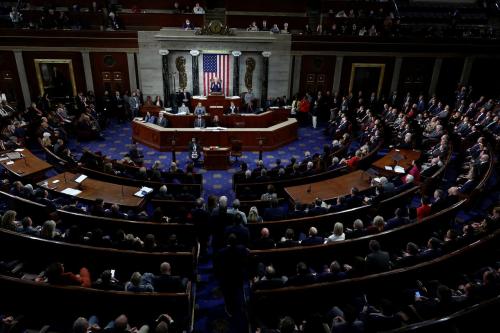Nikki Haley, former Governor of South Carolina and former Ambassador to the United Nations announced this week that she was running for the Republican presidential nomination in 2024. She is the second to announce, after former President Donald Trump, but she will not be the last. She is likely to be followed by Florida Gov. Ron DeSantis, by former Vice President Mike Pence, and by former Secretary of State Mike Pompeo. Other, more obscure candidates may also follow given that in recent years, running for president has become a career move towards a gig on Fox or CNN or a way to sell books or just a mammoth ego trip.
“The Republican party rules governing how delegates are awarded to presidential candidates are determined state by state. Taken together, they have a bias in favor of candidates who win by a small number of votes.”
Many things will happen between now and the Republican convention in 2024, and most of them are, at this point in time, unknowable. But there is one thing we do know—if there are many candidates running for the Republican nomination and they all stay in the race—Trump will win.
Here’s why.
The Republican party rules governing how delegates are awarded to presidential candidates are determined state by state. Taken together, they have a bias in favor of candidates who win by a small number of votes. In 2016, Donald Trump was able to win the Republican nomination because he was the plurality winner of a crowded field (11 other candidates) in many states and congressional districts. Trump won 45% of the votes in the primaries and caucuses, but because of the rules for allocating delegates, he won 70% of the votes on the first ballot at the convention.
These results are likely to be repeated in 2024 if Trump faces a large field of candidates. In 2016, Republican state parties used five different types of rules for awarding delegates to presidential candidates. Nine states awarded delegates proportionally—these states accounted for 13% of the delegates to the Republican convention. Three other states elected their delegates on the same ballot as the presidential preference poll. These accounted for 7% of the delegates. The remaining states, accounting for the vast majority of delegates, used some sort of winner-take-all rule.[1]
The most familiar of these is winner-take-all by state where the winner of the state, no matter how small the win, wins all the delegates. For instance, Trump won 45.7% of the vote in Florida in 2016 and won all the state’s 99 delegates. Other states award delegates based on the percentage of the vote a candidate gets in a congressional district. In Tennessee, in 2016, if a candidate won more than 66% of the vote in a district, they could win all the delegates. Trump won 39% of the popular vote there but 57% of the delegates.
The effects of winner-take-all or winner-take-most rules can be seen in the following table from the 2016 race. Note that in each case Trump’s share of the delegates exceeded his share of the popular vote. If Cruz, Kasich and Rubio were one candidate instead of 3, the non-Trump candidate would have accumulated delegates and won the nomination.
How the “hybrid” system helped Trump
| State | Allocation system | Trump vote | Trump delegates | Vote of Cruz, Kasich, and Rubio | Delegates won by Cruz, Kasich, and Rubio |
| Alabama | Hybrid | 43.4 | 36 | 44.2 | 14 |
| Arkansas | Hybrid | 32.8 | 16 | 59.0 | 24 |
| Georgia | Hybrid | 38.8 | 42 | 53.6 | 34 |
| Oklahoma | Hybrid | 28.3 | 14 | 64.0 | 27 |
Note: Votes do not include all candidates, which is why they don’t add up to 100%.
Primary Politics: Everything You Need to Know About How America Nominates Its Presidential Candidates, Elaine C. Kamarck, (Brookings Press 2019, Third edition) Page 155
In 2020, Trump was an incumbent president and like many before him he faced no serious opposition for the Republican nomination. To be sure, however, he did what many previous sitting presidents have done and used his influence to shape a set of rules to his liking. For Trump in 2020, this meant increasing the number of winner-take-all by state primaries from seven to 17 (accounting for 39% of the delegates) and increasing the number of “hybrid” systems (where a candidate crossing a certain threshold, usually 50%, can win all the delegates) from 14 to 17 (accounting for 34% of the delegates.) This was a smart move on Trump’s part, for while his nomination was never really in doubt, by limiting the number of delegates other candidates could win, he guaranteed himself a convention free of challenges on issues like platform and rules.
The 2024 Republican party’s rules are not yet final. One advantage of having run for a nomination in the past, however, is that Trump’s operatives are probably working hard to make sure this nomination system is a favorable one for Trump. Other than that, Trump has to hope that many others get into the race and that, as in 2016, most of them stay in the race until the bitter end—hoping lightning will strike.
“Thus, the most likely way Trump loses his run for the Republican nomination in 2024 is if one of the lesser-known candidates becomes the Republican Biden, empties the field, and wraps up the delegates.”
Finally, Trump has to hope that Republican primary voters in 2024 don’t re-run the Democratic race in 2020. That year, Joe Biden managed to win one of the early states, South Carolina. Several of his opponents got out and endorsed him and he sailed to victory, winning 10 of the big primaries on Super Tuesday.
Republicans are very aware of why Trump won in 2016—in spite of their doubts about him. In 2024, one can imagine substantial pressure on Haley, Pence, Pompeo or others who get into the race to get out in time to coalesce around a non-Trump candidate. In addition, Trump has to have a substantial base that sticks with him through the primaries and there are some signs that Republican voters are looking for a “Trump-lite” candidate for 2024—someone who speaks to their anger but does not have quite the accumulation of baggage. Thus, the most likely way Trump loses his run for the Republican nomination in 2024 is if one of the lesser-known candidates becomes the Republican Biden, empties the field, and wraps up the delegates. But if he keeps a solid base and multiple opponents stay in the race for the duration—Trump will win again.
[1] Primary Politics: Everything You Need to Know About How America Nominates Its Presidential Candidates, Elaine C. Kamarck, (Brookings Press 2019, Third edition) Page 90







Commentary
If Nikki Haley is the first of many to run — Trump will win
February 15, 2023